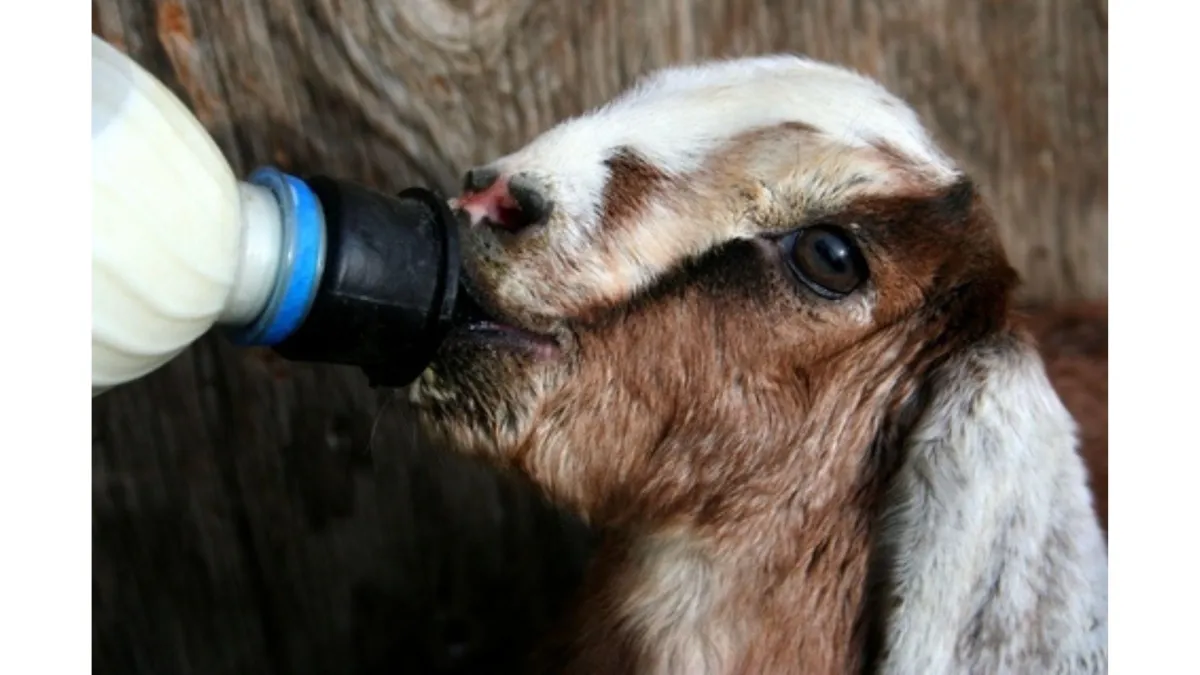
Dairy goats - disbudding, castration, identification and euthanasia
Essential Management Procedures for Dairy Goats
No matter how much we love our goats, there are some procedures that are unpleasant but necessary, such as disbudding, castration, and ear-tagging. These procedures are painful and should only be performed when there are no effective, practical, or humane alternatives. Ideally, they should be carried out by a veterinarian using local anaesthetic, in line with current animal welfare expectations. This is not only kinder to the animal but also ensures the procedure is done competently and safely.
Once these early procedures are complete, most goats can enjoy many years of relatively stress-free life. One final procedure to plan for is the humane end-of-life decision.
How to Disbud Goat Kids Safely and Humanely
Dairy goat kids are usually disbudded soon after birth, typically within the first 4 days. The horn buds appear as small, hard buttons between the ears. In large male kids, they may be felt at birth and disbudding should occur as early as the next day.
Disbudding must be done before the buds become too large. If done late, it can result in distorted horn growth known as scurs, which often cause pain and infection later in life.
Disbudding is painful. Under the New Zealand Code of Welfare, pain relief is mandatory for disbudding, and the procedure must be performed by a trained and competent person. A veterinarian should administer local anaesthetic to reduce pain and distress. Goat-specific disbudding irons (minimum 16 mm) are recommended. Calf irons may be used if applied in an overlapping pattern.
Improper technique can result in serious injury. Kid skulls are thin, and over-application of heat can damage the skull or brain. Caustic chemicals are not recommended due to their risk of causing unintended chemical burns to other parts of the animal or other animals.
Best Practice for Castrating Goat Kids
Castration is necessary for most male kids unless they are to be used for breeding. Uncastrated bucks can become aggressive and have a strong odour, particularly in breeding season.
The rubber ring method is commonly used, ideally when the kid is 1 to 2 weeks old. Pain relief is strongly recommended at any age and legally required for goats older than 6 months. The New Zealand Code of Welfare states that pain relief must be used for castration procedures, and a veterinarian should be involved in older animals.
Early castration may lead to excessively long leg bones, causing mobility problems in adult wethers. Discuss the timing with your vet.
Why Veterinary Help is Recommended
Though disbudding and castration can sometimes be done on-farm, having a veterinarian perform them ensures the use of proper anaesthesia and pain relief. This significantly reduces stress for both goats and their owners.
Ear Tagging and Identification for Goats
Permanent identification may be required depending on your circumstances. Ear tags are the most common method, but tattoos and microchips are also used, especially in registered stock.
Ear tagging should be done carefully to avoid major blood vessels and cartilage. Tags should be small and light. Tattooing typically involves both ears and is best carried out by a vet or experienced handler. Microchips are inserted near the base of the tail.
Goats vaccinated for Johne’s disease require a triangular notch in the ear, done with a specific punch tool.
Planning Humane Euthanasia for Goats
With proper care, goats can live for 10 to 20 years. However, when quality of life declines significantly, euthanasia may be the kindest option.
Veterinary euthanasia by barbiturate injection is the most humane method. Shooting is also acceptable if performed competently, using correct shot placement and a licensed firearm operator. Horned goats should be shot behind the poll, aiming toward the jaw; hornless goats just above the eyes, aiming down the spine.
Newborn kids are often culled by a sharp, heavy blow to the head or by shooting. Though confronting, this is humane if done swiftly and effectively.
Euthanasia should be done discreetly, away from other goats to avoid causing distress.
Final Thoughts
These procedures, while difficult, are part of responsible goat management. By using pain relief and professional support where possible, you can ensure your animals are treated with the care and compassion they deserve.
If you’re thinking about getting started with goats, our What You Need to Keep Goats course is a great place to begin. It covers the essentials including shelter, fencing, nutrition, health and behaviour. The content is designed specifically for lifestyle block owners.

